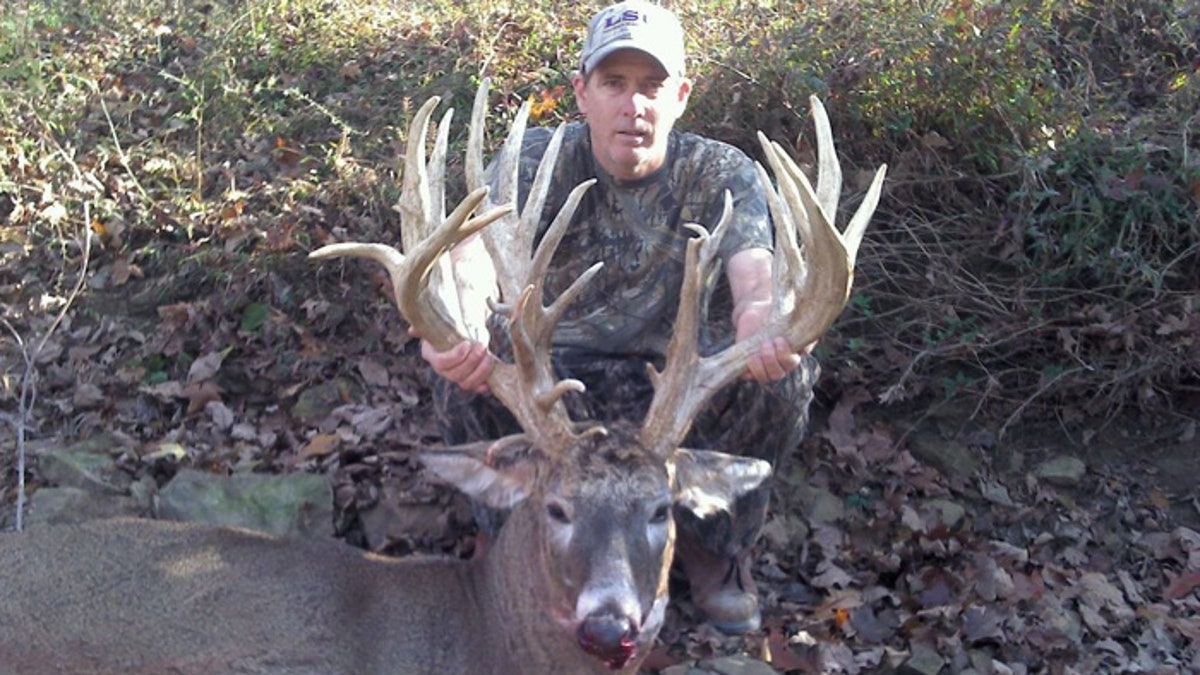
Mike Toney's prized buck is dead, but it will live on.
This buck begot a breakthrough.
For the first time, Louisiana researchers say they have impregnated six female deer with sperm harvested from an already-dead champion buck – this one shot some 600 miles away in Illinois. Louisiana State University AgCenter scientists say that the new process could be the key to preserving the eons-old genetic material of a variety of animals actively hunted in the wild – animals that would otherwise be lost.
“This is one of the most exciting things I have ever been involved in,” said Dearl Sanders, an AgCenter researcher. “We could do a lot of good.”
[pullquote]
The champion buck was bagged by Louisiana hunter Mike Toney, 48, of Baton Rouge, who referred to it as the “deer of a lifetime.”
Toney said that he traveled from his home to a shooting preserve in Vienna, Ill., in early November. On the trip’s first day, Toney’s guide convinced him to forgo shooting a rather large buck – you’re only permitted to shoot one per person – in hopes that he would later come upon a larger animal.
And then it happened.
On the second day, around 5 p.m., after a long day that began at dawn, he came upon what would eventually prove to be a 275-pound champion buck. “It was the buck of a lifetime,” said Toney, who estimated that the deer was likely four or five years old.
He shot. The deer ran. About 20 minutes later, Toney and his guide found the buck about 80 yards away.
“When I saw how big it was, I remembered that LSU had done a study on extracting semen from deceased bucks,” Toney said. “I thought to myself, wouldn’t it be nice if other hunters could see a deer like this in the wild. The rest is history.”
Toney, under an LSU researcher’s direction – he called the school as soon as he killed the deer - removed the buck’s testicles, put them on ice, and drove them back home to Louisiana. There, a former LSU student named Jesse Saenz, who first researched the procedure, extracted the still-living sperm from the iced testicles, placed them in glass straws, and then inseminated 16 does. Six have become pregnant so far.
The does are due the first week in June.
“As soon as they drop, I’m going to go down there and name them myself,” Toney said. “It’s going to be kind of exciting.”
Toney, a 48-year-old construction worker, has been hunting most of his life. He has a 19-year-old son and a 21-year-old daughter.
“It’s still kind of a daydream, everything that has taken place,” he added. “Kind of unreal. When the babies hit the ground and I can put my hands on them, it’ll change for me. Who would have thought 10 or 15 years ago this was possible?
”In the past, you would hunt for the best buck, and then the genetics were gone. Or you would let it go so it would breed in hopes no one else would see it. Now, you can hunt the best buck, and still pass on the genetics. It’s a win-win.”
The process can also be used to restock deer populations that have declined – from development, auto accidents or hunting.
The “Key Deer” in the Florida Keys, for instance, are endangered, and Sanders said that the process could be used to repopulate the Keys with native species.
“The genetic material can be preserved in perpetuity, and unforeseen loses of wildlife, and especially deer, can be restocked with genetically similar deer,” Sanders said.

